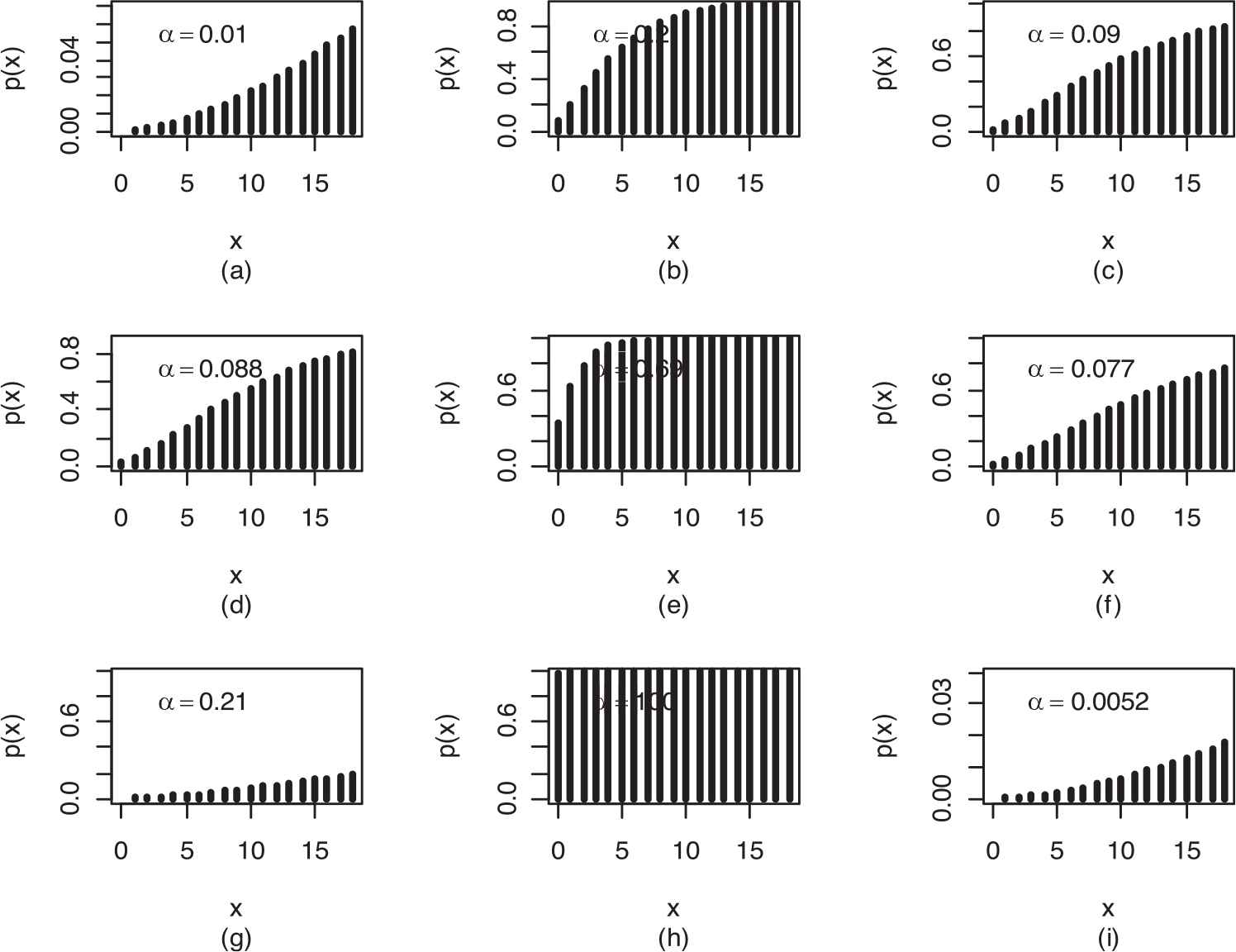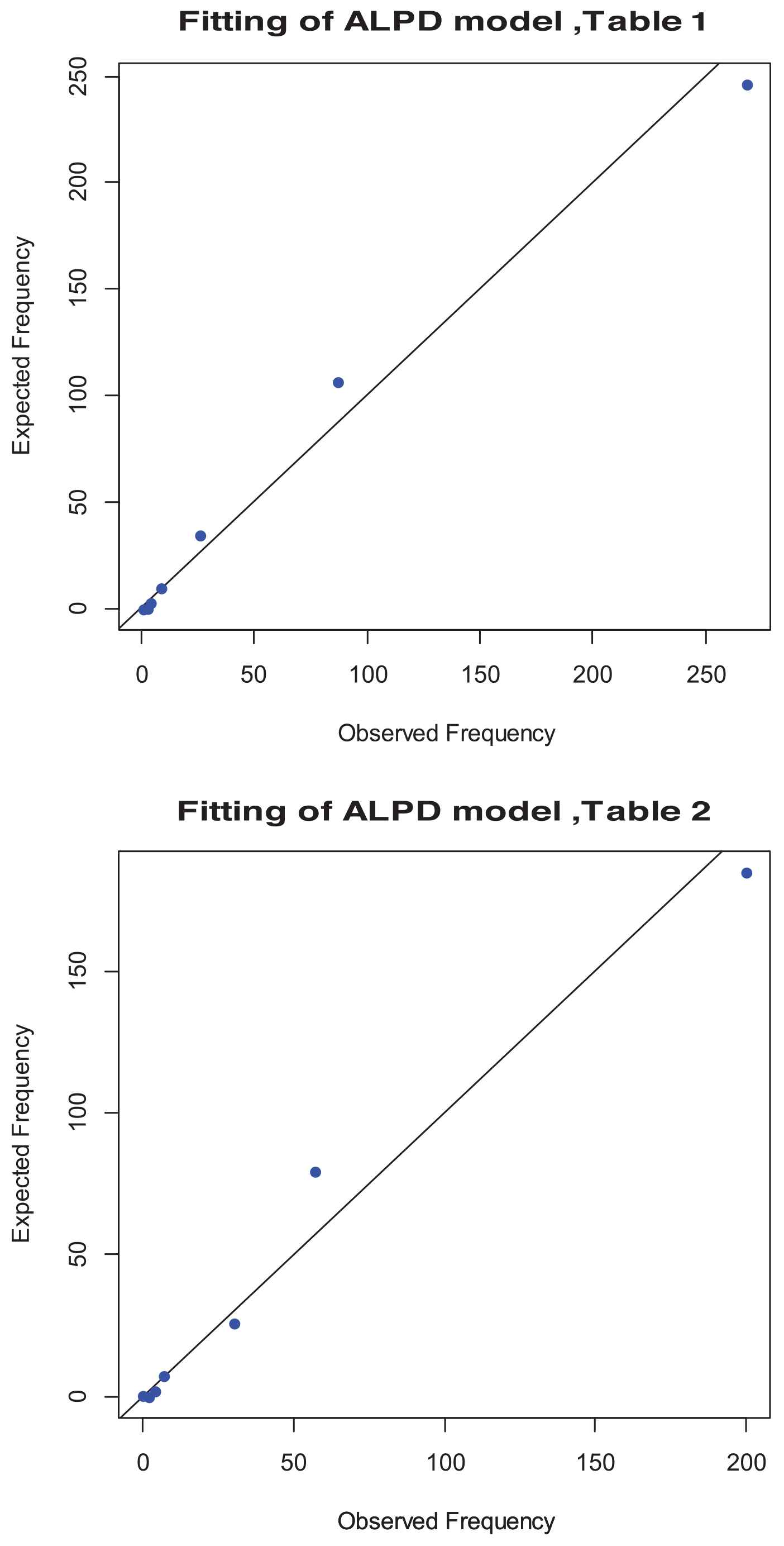A New Flexible Discrete Distribution with Applications to Count Data
- DOI
- 10.2991/jsta.d.200224.006How to use a DOI?
- Keywords
- Poisson distribution; Ailamujia distribution; Count data
- Abstract
In this paper we have explored a new discrete probability mass function that has been generated through compounding mechanism. This newly proposed probability mass function is essentially a mixture of Poisson and Ailamujia distribution. Furthermore the parameter estimation has also been discussed by using Maximum likelihood estimation (MLE) technique. Moreover, we have also studied some important properties of the proposed model that include factorial moments, raw moments, mean, variance, and coefficient of variation. In the end, the application and potentiality of the proposed model have been tested statistically and it has been shown that the proposed model can be employed to model a real life data set to get an adequate fit that has also corroborated through graphically.
- Copyright
- © 2020 The Authors. Published by Atlantis Press SARL.
- Open Access
- This is an open access article distributed under the CC BY-NC 4.0 license (http://creativecommons.org/licenses/by-nc/4.0/).
1. INTRODUCTION
In probability distribution theory there are vast numbers of discrete distributions that have specified applications but at times the observable data have distinct features that are not exhibited by these classical discrete distributions. So to overcome these limitations researchers often develop new probability distributions so that these new distributions can be employed in those situations where classical distributions are not providing any adequate fit. There are so many techniques by which we can obtain new distributions such as transmutation, compounding, etc. but compounding of distributions has received maximum attention from the last few decades due to its simplified approach. Some new compound distributions were obtained in the recent past by the numerous researchers for instance, Adil et al. [1–4] and Adil and Jan [5–8] obtained a new lifetime distributions to address issues related to count data and lifetime of series system and parallel systems.
2. MATERIALS AND METHODS
A random variable X has a Poisson distribution if for
The factorial moment of the Poisson distribution and hence mean and variance are given by
Also, the probability density function associated with Ailamujia random variate is
The raw moments of Ailamujia distribution (AD) are given by
AD is formulated by Lv et al. [9] for several engineering application. This distribution was also studied by Pan et al. [10] for interval estimation and hypothesis testing based on sample of small size. The Bayesian estimation of AD was obtained by Long [11] under type ii censoring using the three different priors based on missing data. The minimax estimation of the parameter of Ailamujia model was evaluated by Li [12].
Usually the parameter
3. DEFINITION OF PROPOSED MODEL
If
3.1. Theorem
The probability mass function of a compound of
Proof:
Using the definition (3), the probability mass function of a compound of
3.2. Cumulative Distribution Function of the Proposed Model

4. FACTORIAL MOMENTS OF PROPOSED MODEL
We shall obtain factorial moments of the proposed model which is very useful to study some of the most important properties such as mean, variance, standard deviation, etc.
4.1. Theorem
The factorial moments of order “r” of the proposed model is given by
Proof:
The factorial moment of order r of Poisson distribution is
Since λ itself is a random variable following AD, therefore one can obtain factorial moment of the proposed model by using the definition
Where
We know that
Therefore
For r = 1, we get the mean of
Moreover the
5. PARAMETER ESTIMATION
The estimation of a parameter of
5.1. Maximum Likelihood Estimation
The estimation of a parameter of
Let
For estimating the unknown parameter we set the first order partial derivative equal to zero
Hence we get that
6. APPLICATION IN BIOLOGICAL SCIENCE
Genetics is the biological science which deals with the mechanisms responsible for similarities and differences among closely related species. The term “genetic” is derived from the Greek word “genesis” meaning grow into or to become. So, genetic is the study of heredity and hereditary variations. It is the study of transmission of body features that is similarities and difference, from parents to offspring's and the laws related to this transmission, any difference between individual organisms or groups of organisms of any species, caused either by genetic difference or by the effect of environmental factors, is called variation. Variation can be shown in physical appearance, metabolism, behavior, learning and mental ability, and other obvious characters. In this section the potentiality of proposed model will be justified by fitting it to the reported genetics count data sets of Catcheside et al. (Tables 1 and 2).
| Fitted Distribution |
|||
|---|---|---|---|
| Number of Aberrations | Observed Frequency | Poisson | PAD |
| 0 | 268 | 231.3 | 246.1 |
| 1 | 87 | 126.1 | 106.1 |
| 2 | 26 | 34.7 | 34.3 |
| 3 | 9 | 9.8 | |
| 4 | 4 | ||
| 5 | 2 | ||
| 6 | 1 | ||
| 7+ | 3 | ||
| Total | 400 | 400 | 400 |
| Chi-square estimate | 40.8 | 10.05 | |
| Parameter estimation | |||
| p-Value | <.0001 | .018 | |
PAD, Poisson Ailamujia Distribution.
Distribution of number of Chromatid aberrations (0.2 g chinon 1, 24 hours).
| Fitted Distribution |
|||
|---|---|---|---|
| Class/Exposure (μg/kg) | Observed Frequency | Poisson | PAD |
| 0 | 200 | 172.5 | 184.6 |
| 1 | 57 | 95.4 | 79.5 |
| 2 | 30 | 26.4 | 25.7 |
| 3 | 7 | ||
| 4 | 4 | ||
| 5 | 0 | ||
| 6 | 2 | ||
| Total | 300 | 300 | 300 |
| Parameter estimation | |||
| Chi-square estimate | 29.6 | 9.4 | |
| p-Value | <.0001 | .09 | |
PAD, Poisson Ailamujia Distribution.
Mammalian cytogenetic dosimetry lesions in rabbit lymphoblast induced by Streptonigrin (NSC-45383) Exposure −70 μg/kg.

7. CONCLUSIONS
In this paper we have proposed a new model by compounding Poison distribution with Ailamujia Distribution (AD) and it has been shown that proposed model can be nested to different compound distributions. Furthermore, we have derived several properties of proposed model such as factorial moments, mean, variance. In addition to this parameter estimation of the proposed model has been discussed by means of method of moments and MLE. Finally, the application of the proposed model have been explored in genetics, based on the goodness of fit test and it has been shown that our model offers a better fit as compared to classical Poisson distribution. We hope that the proposed model will serve as an alternative to various models available in literature.
REFERENCES
Cite this article
TY - JOUR AU - Anwar Hassan AU - Gulzar Ahmad Shalbaf AU - Sheikh Bilal AU - Adil Rashid PY - 2020 DA - 2020/03/02 TI - A New Flexible Discrete Distribution with Applications to Count Data JO - Journal of Statistical Theory and Applications SP - 102 EP - 108 VL - 19 IS - 1 SN - 2214-1766 UR - https://doi.org/10.2991/jsta.d.200224.006 DO - 10.2991/jsta.d.200224.006 ID - Hassan2020 ER -
